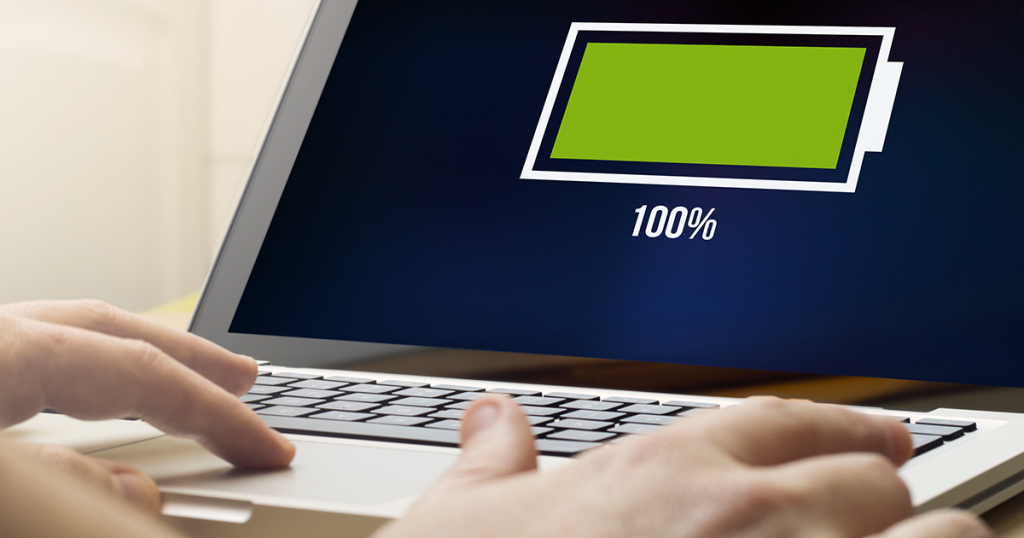There are many myths, half-truths, and legends about batteries in notebooks, how to handle them properly, and how they last the longest. Many also don’t like built-in batteries simply because you can’t remove them. We would now like to finally clear up these stories about the batteries.
Should I remove the battery if the notebook is connected to the mains for a long time?
There are umpteen opinions, statements, half-truths, and instructions here – but hardly any of them are really effective. The fact is: With modern notebooks, it is healthier for the battery if it simply remains plugged in. The charging electronics of the notebooks are now so advanced that the notebooks optimally protect the battery when it is not needed. The times when the battery was always being charged while the notebook was connected to the mains are long gone.
If, on the other hand, you remove the battery from the notebook and do not store it properly, the battery can “lie dead” in a relatively short time. This is usually due to deep discharge or storage that is too humid or too warm, which can quickly damage the battery.
If you still want to store the battery outside of the notebook, make sure that the battery is 60% charged and then store it in a dark, dry, and cool place. The notebook’s original packaging is best suited to protect it from moisture and sunlight. A modern lithium-ion battery also has a self-discharge of around 2% per month. Therefore, check the charge level of the battery regularly, at least once a year, and whether it is still working properly.
Should the battery always be fully discharged before being charged again?
This statement has also been true for as long as notebooks have existed. It used to be correct because the nickel-cadmium or nickel-metal hydride batteries used could still have a so-called memory effect. This ensured that the battery “forgot” its maximum capacity and only charged up to 70% capacity, for example, because it thought it was full. However, modern lithium-ion batteries (Li-Ion) and future lithium-polymer cells no longer suffer from this effect. This means that the battery can be charged at any time, and it does not necessarily have to be fully charged. In principle, it is also better to charge the battery as soon as possible. The service life of Li-Ion batteries is calculated in charging cycles. A charging cycle corresponds to 100 percentage points – regardless of whether they are charged in one go or 100 times 1%.
Do I need to “train” my new battery to get its full capacity?
Similar to the previous points, it is a half-truth that new batteries need to be “trained”, i.e. run from 100% to shut down several times. This statement also comes from the times of nickel-cadmium and nickel-metal hydride batteries, which first had to “learn” their full capacity.
With modern batteries, however, this is no longer necessary. A one-time full discharge is recommended so that the battery level indicator software can calibrate to the battery. More “training” of the battery is not necessary, but only damages.
Is a permanently integrated battery worse than a removable one?
In short: no. Modern rechargeable batteries can easily last for several years with normal use. Thanks to the modern charging electronics described above, permanently integrated batteries are protected as best as possible and last just as long as a removable one – often even longer. The only disadvantage? If the battery is empty, you cannot simply insert a new, fully charged one. Thanks to new connections such as USB Type C, some current notebooks can already be operated and charged via external batteries, so that the running time away from a socket is significantly extended. And whether you have a spare battery or a power bank with you for all mobile devices makes little difference in the end – does it?
My battery is dead, now what?
It is particularly important that a defective battery is replaced immediately. A battery’s chemicals are toxic to humans, and defective batteries can even explode or burst into flames. This usually happens due to a short circuit or mechanical damage, for example after a fall. This video shows the worst case very well:
Defective batteries are therefore not to be trifled with. Therefore, never throw a (defective) battery in the household waste, but dispose of it properly. This can be done, for example, in the city’s or community’s recycling depots, but also by post – in the event of a swollen battery it is better to refrain from sending it, the battery could burst at any time.
At what temperatures can I use the battery?
Batteries, especially Li-Ion batteries, don’t like cold or heat. The lower the temperature, the slower the chemical processes within the battery. As a result, it can happen that at some point the voltage is no longer sufficient to operate the notebook. At very low temperatures, it can also happen that the electrolytes in the battery freeze – then almost no more voltage is emitted.
Notebooks should therefore always be operated at least 0°C, but the battery temperature is best at around 15-20°C, which, however, cannot always be influenced. This temperature range should also be maintained during storage. Only special batteries, eg in outdoor notebooks like Panasonic’s Toughbook series, can withstand temperatures of down to -54°C without being damaged. However, this is then specifically noted for the device or battery and is an exception.
Heat is also a problem, so you shouldn’t leave notebooks or batteries in direct sunlight for long periods of time. Otherwise, it can damage not only the battery but also the entire device.

